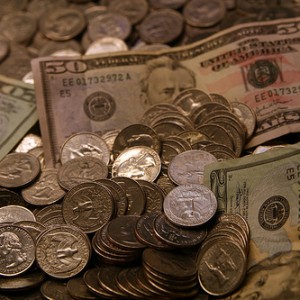 Please be warned – the statistics about the economy that you are about to read are likely to completely blow your mind. The U.S. economy is in far, far more trouble than the mainstream news would have you believe. Most Americans are still convinced that the economic downturn that we have been experiencing will soon be over and that things will shortly get back to “normal”. But that is not what is happening. What we are actually witnessing is the disintegration of the foundations of the U.S. economic system. The survival of the American middle class is now in serious jeopardy. In fact, the survival of the American way of life is now in serious jeopardy. Today, more Americans are living in poverty than at any other time in history. Millions upon millions of Americans are out of work and it now takes the average unemployed worker an average of over 35 weeks to find a job. Home sales are at near record lows. Home foreclosures are at record highs. Factories and jobs continue to leave the United States at a dizzying pace and the U.S. government has piled up the biggest mountain of debt in the history of the world with no end in sight. So yes, the U.S. economy is in a deep, deep state of crisis, and there is not much hope that things are going to get much better any time soon.
Please be warned – the statistics about the economy that you are about to read are likely to completely blow your mind. The U.S. economy is in far, far more trouble than the mainstream news would have you believe. Most Americans are still convinced that the economic downturn that we have been experiencing will soon be over and that things will shortly get back to “normal”. But that is not what is happening. What we are actually witnessing is the disintegration of the foundations of the U.S. economic system. The survival of the American middle class is now in serious jeopardy. In fact, the survival of the American way of life is now in serious jeopardy. Today, more Americans are living in poverty than at any other time in history. Millions upon millions of Americans are out of work and it now takes the average unemployed worker an average of over 35 weeks to find a job. Home sales are at near record lows. Home foreclosures are at record highs. Factories and jobs continue to leave the United States at a dizzying pace and the U.S. government has piled up the biggest mountain of debt in the history of the world with no end in sight. So yes, the U.S. economy is in a deep, deep state of crisis, and there is not much hope that things are going to get much better any time soon.
Because of the exploding U.S. trade deficit, every single month far more wealth goes out of the United States than comes into it. Every single month more good jobs and more factories leave our shores never to return. America was once the greatest industrial power on the globe, but today the U.S. is being deindustrialized at a staggering pace. Every single month state and local governments go even deeper into debt. Every single month the U.S. government goes even deeper into debt. Today, the total of all consumer, business and government debt in the United States is equivalent to approximately 360 percent of GDP. At no point during the Great Depression did we ever even come close to such a level. It would be hard to understate exactly how much danger the U.S. economy is in.
Yes, things really are that serious.
The following are 44 statistics about the U.S. economy that will send a deep, deep chill down your spine….
#1 The Census Bureau says that 43.6 million Americans are now living in poverty and according to them that is the highest number of poor Americans that they have ever recorded in 51 years of record-keeping.
#2 The number of Americans enrolled in the food stamp program passed the 41 million mark for the first time ever in June.
#3 As of this past June, the number of Americans on food stamps had set a new all-time record for 19 months in a row.
#4 The number of Americans in the food stamp program increased a staggering 55 percent from December 2007 to June 2010.
#5 One out of every six Americans is now enrolled in at least one anti-poverty program run by the federal government.
#6 The U.S. poverty rate is now the third worst among the developed nations tracked by the Organization for Economic Cooperation and Development.
#7 According to an analysis by Isabel Sawhill and Emily Monea of the Brookings Institution, 10 million more Americans (including 6 million more children) will slip into poverty over the next decade.
#8 More than 50 million Americans are now on Medicaid, the U.S. government health care program originally designed principally to help the poor.
#9 In 2009 alone, approximately 4 million more Americans joined the ranks of the poor.
#10 According to one recent survey, 28% of all U.S. households have at least one person that is looking for a full-time job.
#11 Nearly 10 million Americans now receive unemployment insurance, which is almost four times as many that were receiving it back in 2007.
#12 Today the United States has approximately 4 million fewer wage earners than it did in 2007.
#13 The number of Americans receiving long-term unemployment benefits has risen over 60 percent in just the past year alone.
#14 As of the end of 2009, less than 12 million Americans worked in manufacturing. The last time that less than 12 million Americans were employed in manufacturing was in 1941.
#15 The United States has lost approximately 42,400 factories since 2001. Approximately 75 percent of those factories employed over 500 workers while they were still in operation.
#16 The United States has lost a whopping 32 percent of its manufacturing jobs since the year 2000.
#17 According to Tax Notes, the truth is that between 1999 and 2008 employment at the foreign affiliates of U.S. parent companies skyrocketed 30 percent to 10.1 million. During that same time period, U.S. employment at American multinational corporations declined 8 percent to 21.1 million.
#18 In 1959, manufacturing represented 28 percent of all U.S. economic output. In 2008, it represented only 11.5 percent.
#19 The U.S. trade deficit normally comes in at around 40 or 50 billion dollars each month these days, and that means that by the end of the year a half trillion dollars (or more) will have left the United States.
#20 In 2008, 1.2 billion cellphones were sold worldwide. So how many of them were manufactured inside the United States? Zero.
#21 According to a new study conducted by the Economic Policy Institute, if the U.S. trade deficit with China continues to increase at its current rate, the U.S. economy will lose over half a million jobs this year alone.
#22 As of the end of July, the U.S. trade deficit with China had risen 18 percent compared to the same time period a year ago.
#23 The United States spends approximately $3.90 on Chinese goods for every $1 that the Chinese spend on goods from the United States.
#24 One prominent economist is projecting that the Chinese economy will be three times larger than the U.S. economy by the year 2040.
#25 Bankruptcy filings in the United States increased 20 percent during the twelve month period ending June 30th.
#26 One out of every seven mortgages was either delinquent or in foreclosure during the first quarter of 2010.
#27 As of June 30th, 23 percent of all residential mortgages in the United States were “underwater”. In other words, as of the end of June 23 percent of American households with a home mortgage owed more on their mortgages than their homes were worth.
#28 U.S. Banks repossessed 269,962 U.S. homes during the second quarter of 2010, which was a new all-time record.
#29 U.S. banks repossessed 25 percent more homes in August 2010 than they did in August 2009.
#30 As of this March, U.S. banks had an inventory of 1.1 million foreclosed homes, which was a new all-time record and which was up 20 percent from one year ago.
#31 According to Mark Zandi, the chief economist at Moody’s Analytics, approximately 2 million more homes will be repossessed by mortgage lenders by the end of 2011.
#32 New home sales in the United States were unchanged in August, coming in at a 288,000 annual pace, matching July as the second lowest figure ever recorded going all the way back to 1963.
#33 The Mortgage Bankers Association recently announced that demand for loans to purchase U.S. homes has sunk to a 13-year low.
#34 One shocking new study indicates that Americans are $6.6 trillion short of what they need to retire comfortably.
#35 Unfunded pension benefit liabilities at the state government level – the amount state governments owe in promised retirement benefits beyond what they have collected – exceed $3 trillion.
#36 According to the Congressional Budget Office, the Social Security system will pay out more in benefits than it receives in payroll taxes in 2010. That was not supposed to happen until at least 2016.
#37 In 1950, each retiree’s Social Security benefit was paid for by 16 U.S. workers. In 2010, each retiree’s Social Security benefit is paid for by approximately 3.3 U.S. workers. By 2025, it is projected that there will be approximately two U.S. workers for each retiree.
#38 During the first quarter of 2010, the number of loans that were at least three months past due in the United States increased for the 16th quarter in a row.
#39 As we approach the end of September 2010, there are now 872 banks (well over 10 percent of all U.S. banks) on the FDIC list of “problem” banks.
#40 Americans now owe more than $849 billion on student loans.
#41 A staggering 25 percent of all American adults now have a credit score below 599.
#42 According to a poll taken in 2009, 61 percent of Americans “always or usually” live paycheck to paycheck. That was up significantly from 49 percent in 2008 and 43 percent in 2007.
#43 The U.S. government has accumulated a national debt that is rapidly approaching 14 trillion dollars. It is increasing by over 4 billion dollars every single day.
#44 A trillion $10 bills, if they were taped end to end, would wrap around the globe more than 380 times. That amount of money would still not be enough to pay off the U.S. national debt.









